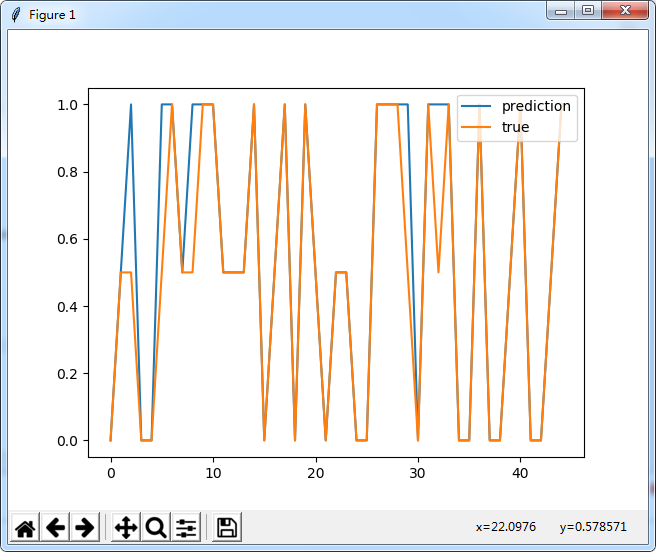本文实例讲述了python实现的逻辑回归算法。分享给大家供大家参考,具体如下:
使用python实现逻辑回归
using python to implement logistic regression algorithm
菜鸟写的逻辑回归,记录一下学习过程
代码:
|
1
2
3
4
5
6
7
8
9
10
11
12
13
14
15
16
17
18
19
20
21
22
23
24
25
26
27
28
29
30
31
32
33
34
35
36
37
38
39
40
41
42
43
44
45
46
47
48
49
50
51
52
53
54
55
56
57
|
#encoding:utf-8""" author: njulpy version: 1.0 data: 2018/04/10 project: using python to implement logisticregression algorithm"""import numpy as npimport pandas as pdimport matplotlib.pyplot as pltfrom sklearn.model_selection import train_test_split#建立sigmoid函数def sigmoid(x): x = x.astype(float) return 1./(1+np.exp(-x))#训练模型,采用梯度下降算法def train(x_train,y_train,num,alpha,m,n): beta = np.ones(n) for i in range(num): h=sigmoid(np.dot(x_train,beta)) #计算预测值 error = h-y_train.t #计算预测值与训练集的差值 delt=alpha*(np.dot(error,x_train))/m #计算参数的梯度变化值 beta = beta - delt #print('error',error) return betadef predict(x_test,beta): y_predict=np.zeros(len(y_test))+0.5 s=sigmoid(np.dot(beta,x_test.t)) y_predict[s < 0.34] = 0 y_predict[s > 0.67] = 1 return y_predictdef accurancy(y_predict,y_test): acc=1-np.sum(np.absolute(y_predict-y_test))/len(y_test) return accif __name__ == "__main__": data = pd.read_csv('iris.csv') x = data.iloc[:,1:5] y = data.iloc[:,5].copy() y.loc[y== 'setosa'] = 0 y.loc[y== 'versicolor'] = 0.5 y.loc[y== 'virginica'] = 1 x_train,x_test,y_train,y_test = train_test_split(x,y,test_size=0.3,random_state=15) m,n=np.shape(x_train) alpha = 0.01 beta=train(x_train,y_train,1000,alpha,m,n) pre=predict(x_test,beta) t = np.arange(len(x_test)) plt.figure() p1 = plt.plot(t,pre) p2 = plt.plot(t,y_test,label='test') label = ['prediction', 'true'] plt.legend(label, loc=1) plt.show() acc=accurancy(pre,y_test) print('the predicted value is ',pre) print('the true value is ',np.array(y_test)) print('the accuracy rate is ',acc) |
输出结果:
the predicted value is [ 0. 0.5 1. 0. 0. 1. 1. 0.5 1. 1. 1. 0.5 0.5 0.5 1.
0. 0.5 1. 0. 1. 0.5 0. 0.5 0.5 0. 0. 1. 1. 1. 1.
0. 1. 1. 1. 0. 0. 1. 0. 0. 0.5 1. 0. 0. 0.5 1. ]
the true value is [0 0.5 0.5 0 0 0.5 1 0.5 0.5 1 1 0.5 0.5 0.5 1 0 0.5 1 0 1 0.5 0 0.5 0.5 0
0 1 1 1 0.5 0 1 0.5 1 0 0 1 0 0 0.5 1 0 0 0.5 1]
the accuracy rate is 0.9444444444444444

附:上述示例中的iris.csv文件点击此处本站下载。
希望本文所述对大家python程序设计有所帮助。
原文链接:https://blog.csdn.net/njulpy/article/details/79899352










